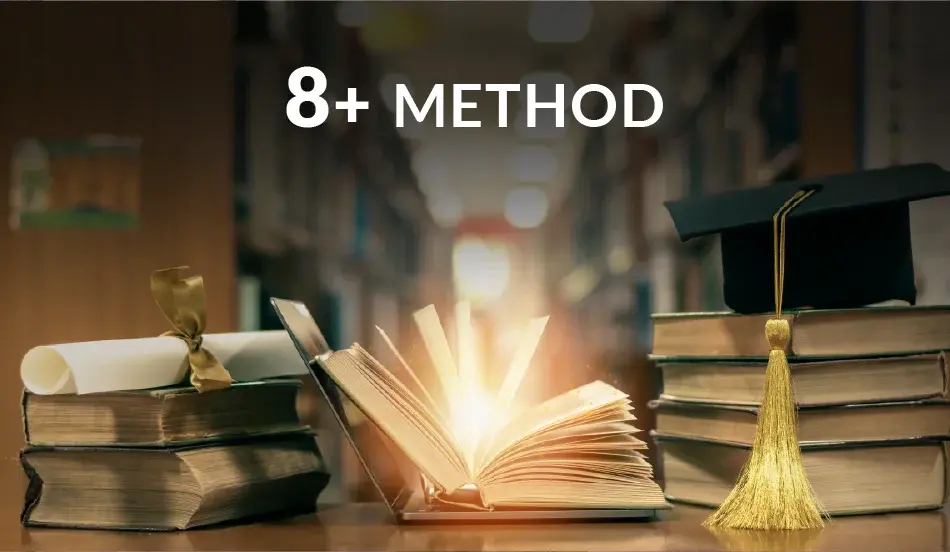The 8+ Method: Key Idea to Excelling as a Writer and Course Creator
How should you strike a balance between pursuing perfectionism and never finishing your book/course, and not settling for mediocrity? Here's a way.
How should you strike a balance between pursuing perfectionism and never finishing your book/course, and not settling for mediocrity? Here's a way.

I don’t know. Something didn’t feel right. Something was wrong.
Our chess team, consisting of six titled players, had spent six months researching and preparing materials for two new courses.
I checked the examples.
There were good examples. Okay examples. Very good examples. And very bad examples.
I asked my team to mark every single example from 1 to 10, where 1 is bad, and 10 is great.
They marked it and sent me back.
There were lots of 3, 5, 9 and all the numbers from 1 to 10.
Then I asked my team to group together everything that is below an 8.
They did.
Then I asked to shift-delete that group.
They didn’t. They stared at me. Very confused.
“My dear team,” I said, “This is our new quality standard. We don’t need everything to be a 10. We don’t want to be perfectionists. But also, we don’t want to have mediocre examples.”
That was in 2020.
Since then, in ChessMood, we have had this 8+ standard in everything we do.
I was recording the course “The WWP Pilot: Navigating Won Positions to Victory”.
Section 11 was about making practical decisions, and that the Engine’s first choice isn’t always the best practical one.
I was supposed to record 5 examples. My chess team had sent me 50 examples, marked from 1 to 10.
Here are examples of 3 and 10. So you can see the difference.
I have often been asked how we keep the quality of our courses and examples. Now you know the answer.
We don’t pursue perfection, and at the same time, we eliminate mediocrity.
8+, nothing less.

Think about: Lawyers, teachers, restaurants, services…
80% of them are bad. 10% are okay. And only 10% are really good.
The same happens with books. Chess books are no exception.
I also have often been asked why I don’t recommend the “X” author who wrote the famous “X” book.
Here is the issue.
Many authors just pick all the examples they had in their files about a particular topic and this gives them one great chapter. One!
Then their publisher says, “Great chapter, turn this into a book.”
But they used all their good examples.
And the rest of the book is no good. Great chapter, great article, but a bad book.
The more famous the author, the more their name plays for them and the less they care for the quality of the examples. Their name will do the job. Their name does the job.
This is not what I recommend. Please, if you are a coach, care for your students, care for the chess world.
Especially nowadays, when there have been so many bad books written - the chess world has already forgotten what a good book is.
If you’re about to enter this world, you’re about to write your 1st book, record your 1st course, here is my advice.
Don’t go for perfectionism and get trapped in never finishing your book or course.
But at the same time, don’t publish anything with bad examples.
Try to keep the 8+ standard.

Don’t publish 7+ examples. Or 3+ examples.
I just got a chess book recently that I was waiting for, I was excited to read this new book. But I was disappointed. Filled with examples and diagrams, I’d rank 3 or 4 or less.
The author was so eager to write a book he must have forgotten to write a good book.
If you have pride in your work, 8+ it.
There are some authors, like Johan Hellsten, who always have it. Who often does this intuitively. He has huge experience.

One of the best books about chess strategy
With time, the 8+ will become automatic for you, but meanwhile, do it manually. Mark all of your examples from 1 to 10 and delete anything below 8.
To help yourself with being objective, I recommend having 10 examples for each 1 example you want to include in your book/course.
For instance, if you want to have 5 examples in your chapter, have 50!
Mark everything from 1 to 10. Then delete everything below 8.
You’ll have 5-10 8+ examples and will have a nice selection.
Your chapter will be excellent.
If you’re a professional coach, you have folders and files with examples.
Mark all of them from 1 to 10.
Then during the lessons with your students, often there will come up something that you overlooked in your example. Which will either devalue or elevate the example. Change these accordingly.
The more examples you have in your files, the more ruthlessly you can set the quality standard.
About 15 years ago, I started to collect examples for my “Calculation” folder. With time, the number crossed 2,000.
Then one day, I marked all of them from 1-10.
I deleted everything below 9.
Now I have in my calculation folder 250 examples scored 9+
It took years to find these perfect and almost-perfect examples.
I have more than enough material to write a book 😊
Maybe I’ll write it one day.
In the same way, if you constantly collect material, mark them and delete the ones that don’t match your quality standard, you’ll soon have high-quality examples on each topic.
Then you’ll be an 8+ coach.
Then you’ll have very decent material to write a book or record a course.
Then your students will really improve. Much faster!
I see some bestselling chess authors and publishers laughing in front of their monitors.
They say, “You didn’t get it. It's all about name and marketing.”
Maybe they are right.
But I don’t think it is the right way to serve the chess world.
The choice is yours. The 8+ method is in your hands.
With love,
GM Avetik
P. S. Please share your feedback, takeaways, and thoughts here.
P. P. S. You might also love the following articles:
How to Find the Right Chess Coach | Ultimate Guide
Objectivity - the key ingredient for your growth
And here is my gift to you.

https://chessmood.com/course/avetik-grigoryan-best-games
I’ve recorded my most memorable 10 games that also should be very instructive for you. It’s unlocked, and you can watch the course even if you’re not a ChessMood student.
Originally published Sep 19, 2023

